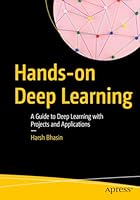
OpenGL – Build high performance graphics
- Length: 1496 pages
- Edition: 1
- Language: English
- Publisher: Packt Publishing
- Publication Date: 2017-05-29
- ISBN-10: B07124RCBT
- Sales Rank: #1939070 (See Top 100 Books)
Gain proficiency with OpenGL and build compelling graphics for your games and applications
About This Book
- Get to grips with a wide range of techniques for implementing shadows using shadow maps, shadow volumes, and more
- Explore interactive, real-time visualizations of large 2D and 3D datasets or models, including the use of more advanced techniques such as stereoscopic 3D rendering
- Create stunning visuals on the latest platforms including mobile phones and state-of-the-art wearable computing devices
Who This Book Is For
The course is appropriate for anyone who wants to develop the skills and techniques essential for working with OpenGL to develop compelling 2D and 3D graphics.
What You Will Learn
- Off-screen rendering and environment mapping techniques to render mirrors
- Shadow mapping techniques, including variance shadow mapping
- Implement a particle system using shaders
- Utilize noise in shaders
- Make use of compute shaders for physics, animation, and general computing
- Create interactive applications using GLFW to handle user inputs and the Android Sensor framework to detect gestures and motions on mobile devices
- Use OpenGL primitives to plot 2-D datasets (such as time series) dynamically
- Render complex 3D volumetric datasets with techniques such as data slicers and multiple viewpoint projection
In Detail
OpenGL is a fully functional, cross-platform API widely adopted across the industry for 2D and 3D graphics development. It is mainly used for game development and applications, but is equally popular in a vast variety of additional sectors. This practical course will help you gain proficiency with OpenGL and build compelling graphics for your games and applications.
OpenGL Development Cookbook – This is your go-to guide to learn graphical programming techniques and implement 3D animations with OpenGL. This straight-talking Cookbook is perfect for intermediate C++ programmers who want to exploit the full potential of OpenGL. Full of practical techniques for implementing amazing computer graphics and visualizations using OpenGL.
OpenGL 4.0 Shading Language Cookbook, Second Edition – With Version 4, the language has been further refined to provide programmers with greater power and flexibility, with new stages such as tessellation and compute. OpenGL Shading Language 4 Cookbook is a practical guide that takes you from the fundamentals of programming with modern GLSL and OpenGL, through to advanced techniques.
OpenGL Data Visualization Cookbook – This easy-to-follow, comprehensive Cookbook shows readers how to create a variety of real-time, interactive data visualization tools. Each topic is explained in a step-by-step format. A range of hot topics is included, including stereoscopic 3D rendering and data visualization on mobile/wearable platforms. By the end of this guide, you will be equipped with the essential skills to develop a wide range of impressive OpenGL-based applications for your unique data visualization needs.
This Learning Path combines some of the best that Packt has to offer in one complete, curated package. It includes content from the following Packt products, OpenGL Development Cookbook by Muhammad Mobeen Movania, OpenGL 4.0 Shading Language Cookbook, Second Edition by David Wolff, OpenGL Data Visualization Cookbook by Raymond C. H. Lo, William C. Y. Lo
Style and approach
Full of easy-to-follow hands-on tutorials, this course teaches you to develop a wide range of impressive OpenGL-based applications in a step-by-step format.
Table of Contents
1. Module 1
1. Introduction to Modern OpenGL
2. 3D Viewing and Object Picking
3. Offscreen Rendering and Environment Mapping
4. Lights and Shadows
5. Mesh Model Formats and Particle Systems
6. GPU-based Alpha Blending and Global Illumination
7. GPU-based Volume Rendering Techniques
8. Skeletal and Physically-based Simulation on the GPU
2. Module 2
1. Getting Started with GLSL
2. The Basics of GLSL Shaders
3. Lighting, Shading, and Optimization
4. Using Textures
5. Image Processing and Screen Space Techniques
6. Using Geometry and Tessellation Shaders
7. Shadows
8. Using Noise in Shaders
9. Particle Systems and Animation
10. Using Compute Shaders
3. Module 3
1. Getting Started with OpenGL
2. OpenGL Primitives and 2D Data Visualization
2D visualization of 3D/4D datasets
3. Interactive 3D Data Visualization
4. Rendering 2D Images and Videos with Texture Mapping
5. Rendering of Point Cloud Data for 3D Range-sensing Cameras
6. Rendering Stereoscopic 3D Models using OpenGL
7. An Introduction to Real-time Graphics Rendering on a Mobile Platform using OpenGL ES 3.0
8. Interactive Real-time Data Visualization on Mobile Devices
9. Augmented Reality-based Visualization on Mobile or Wearable Platforms

Arduino & MicroPython with ESP32: A Beginner's Guide to Hands-On Learning and DIY Projects - Part 1






